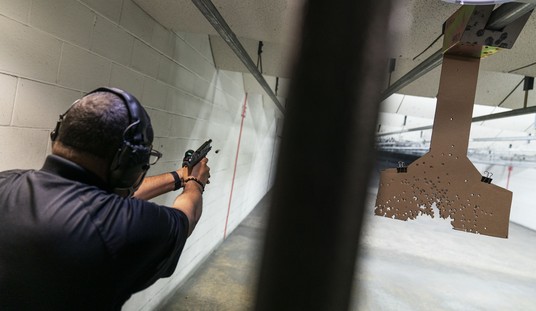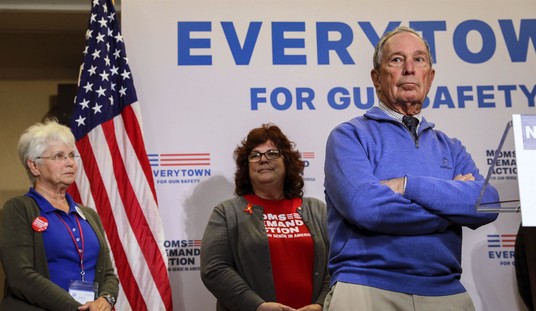City leaders in Columbus, Ohio have already passed several constitutionally suspect gun control ordinances that they claim will make the city a safer place, including a ban on ammunition magazines that can accept 30 rounds or more and a nebulous gun storage mandate, but now Mayor Andrew Ginter and the Columbus city council are once again taking aim at the generally law-abiding populace rather than focus their efforts on law-breakers and repeat offenders.
While the local gun control ordinances are on hold, at least for now, thanks to a court decision granting an injunction, Ginter is now going after businesses in the city’s Short North neighborhood, encouraging them to “voluntarily” close their doors at midnight on weekends and imposing a curfew on local food trucks operating in the same area.
The measures follow two consecutive weekends of gun violence in the neighborhood, known for its art galleries and night life.
A 21-year-old man was shot and killed after a fight escalated to gun violence on May 14. And nearly two weeks ago, a shootout left at least 10 people wounded, resulting in police firing their own weapons and seizing 11 guns.
That chaotic shooting spree, which left the Short North cordoned off for hours by crime scene tape, sent bullets through glass windows on store fronts, careening off buildings and ricocheting elsewhere. The resulting damage remained evident, with shattered glass and bullet holes still visible in many Short North shop fronts.
In the wake of the gun violence, Columbus police Chief Elaine Bryant said beginning this weekend, between the hours of 8 p.m. and 4 a.m., officers will have an increased presence in cruisers, on bicycles and on foot in the Short North. Extra lighting will be placed in certain areas, she added.
While Ginter claims his curfew request is voluntary, he’s made it clear that any establishments that remain open after the witching hour will be subject to increased scrutiny by local law enforcement.
“The vast majority of the time, the Short North is incredibly safe, so there’s no surprise to me that most people feel safe,” Betsy Pandora, executive director of the Short North Alliance, told The Dispatch. “The Short North is an incredibly resilient community.”
Pandora expressed confidence that in an entertainment district comprised of 300 businesses, a third of which are eating and drinking establishments, many owners will willingly comply with the request to close early on weekends.
Ginther also said he believed businesses would agree to close early, despite the potential financial loss. If they don’t, Ginther said they would have the “full and undivided attention of city, county and state law enforcement.”
But not all business owners in the Short North may be happy with the plan.
Ed Hastie, an attorney who represents at least four owners and numerous establishments along the Short North, said bars and restaurants in the area have been doing everything asked of them. He argued that the city should enforce open container and underage drinking laws, while cracking down on those smoking marijuana in public.
“By my conservative estimate, the bars and restaurants spend at least $1 million a year hiring special duty officers, probably twice that on private security,” Hastie said, adding that the city’s statement about cracking down on establishments that don’t comply with closing at midnight “an unnecessary and unproductive threat.”
While the new curfew is drawing the ire of some local businesses, the gun control ordinances are still raising eyebrows and generating complaints as well. Johnny Dudley, a clinical research coordinator at Nationwide Children’s Hospital, recently penned a scathing column blasting Ginter and City Attorney Zach for the city’s new magazine ban. Dudley doesn’t base his objections on the violation of Ohio’s firearm preemption law. but rather takes the mayor and city attorney to task for passing a do-nothing measure instead of pursuing a more substantive approach to reducing violence.
An additional detail of the Columbus law should also concern the public. And that is, who is exempt from the prohibition of 30-round magazines. The law has the typical exemptions for law enforcement officers and those who work in certain certified security positions. However, there are also exemptions for ordinary members of the public. Civilians who have paid hundreds of dollars in taxes to own a firearm that is regulated under the National Firearm Act (NFA) are exempt from the law. NFA items are sawed-off shotguns and rifles, silencers, and fully automatic machine guns. Columbus has specifically identified these firearms as “dangerous ordnance,” but has exempted them and their owners from enforcement of the magazine ban. This exemption further will inevitably increase the gap in equitable enforcement of the law because it explicitly grants immunity to individuals who simply pay a tax to the federal government.
The Columbus ordinance (which will come into effect during a city election year) can be viewed as self-defeating as it contains a provision to define “large-capacity” magazines as magazines holding 100 rounds instead of 30 rounds if a court overturns that portion of the law. Passing a law that grants exemptions to people willing to pay hundreds of dollars and has a fail-safe measure because city officials know it is likely to be overturned by some court is not cause for celebration. It should invoke criticism from the public and generate pressure for City Council to put in the work to create lasting solutions, not temporary fixes during election years.
Dudley is on to something by pointing out that Klein, Ginter, and the city council are imposing these new ordinances during an election year, especially in light of the move to impose a curfew on local businesses, but he’s leaving out that this attack on the state’s preemption law is part of a coordinated effort by the gun control lobby to undo or challenge other preemption statutes around the country. St. Paul, Minnesota, for example, recently adopted a gun storage mandate designed to do an end run around existing preemption laws, and Colorado Democrats repealed the state’s preemption law last year. The common thread between the new gun control ordinances in Columbus and the mayor’s “voluntary” curfew is that both measures are aimed squarely at individuals and industries that aren’t to blame for the city’s violent crime while ignoring the trigger-pullers who are the ones ultimately responsible. That may play well with many of the Democratic voters in Columbus, but it’s not going to do anything to make the city a safer place to live.








